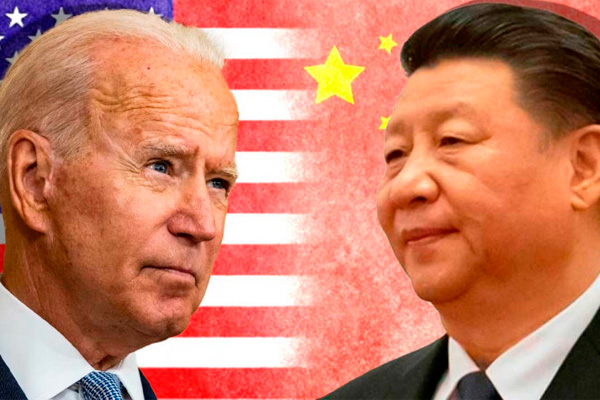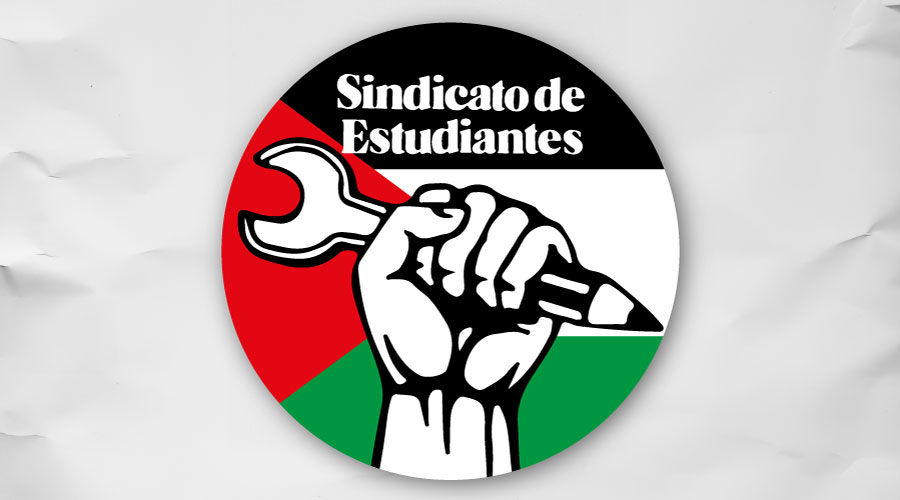Since the 2008 crisis, we have witnessed an unstoppable process: the acceleration of China’s rise as a new world power and the decline of US hegemony. Something that has been evident in the management of the pandemic, in the increasing Western economic dependence on China or in the humiliating US defeat in Afghanistan. The advances of the Asian giant in strategic areas such as technology, with the development of 5G or artificial intelligence, or rare earths, where it controls 75% of world production, are also a striking example of this.
Provocations of US imperialism
As part of the strategy to confront this advance, last May Joe Biden visited his main allies in the area for the first time, South Korea and Japan. Three were the keys to this tour. Firstly, the announcement of a new economic cooperation treaty, known as the Indo-Pacific Economic Framework (IPEF), which includes a total of 13 countries. Secondly, a new meeting of the Quadrilateral Security Dialogue, known as QUAD, reached among Japan, Australia, India and the US to counter China in the region. And thirdly, the Taiwan issue.
It was precisely Biden’s statements about Taiwan that marked the character of this trip. He declared that the US would intervene militarily in the event of Chinese military aggression on the island. Statement which, giving the backdrop of the war in Ukraine, represents a further step in the threats of US imperialism. It is true that the statements were later eased up by the White House, which insisted that the US shall continue to respect the “one China” principle (only 14 small countries recognize Taiwan). But with them Washington continues to tighten the rope, just as it did with the expansion of NATO in Europe, in an attempt to tie its partners in the region short in the face of Chinese expansion.
However, despite the propaganda, the race for political and economic hegemony in the region is far from advancing in their favor. The new treaty for economic cooperation, which in addition to the US and Japan includes Australia, Brunei, South Korea, India, Indonesia, the Philippines, Malaysia, New Zealand, Singapore, Thailand and Vietnam, actually represents little progress. Far from being a free trade agreement, it limits itself to closer ties in terms of investment standards, renewable energies or the supervision of supply chains.
This has nothing to do with the Regional Comprehensive Economic Association (RCEP), the world’s largest free trade agreement, reached by China, Japan, South Korea, Australia, New Zealand and the ten Southeast countries that conform the ASEAN. The treaty, signed in 2020 and starting in January 2022, covers around 30% of the world’s population and GDP.
Washington faces the same weaknesses in other areas. In the QUAD, India not only has not condemned the Russian invasion of Ukraine, but has also benefited from the purchase of crude oil and has important agreements with Russia to purchase weapons. The US military pact with the United Kingdom and Australia (AUKUS) was not well received by most countries in Southeast Asia. It also led to a head-on clash with France due to the cancellation of the agreement for the sale of submarines to Australia worth 50,000 million Dollars.
The importance of Taiwan for China
In the same way that the US tries to maintain its role as the world’s leading power, China does its job as an emerging power. A struggle for world hegemony that becomes increasingly fierce in this context of crisis of the capitalist system.
China’s claims to Taiwan date back to the end of the civil war (1927-1949), when Mao’s army defeated Chiang Kai-shek’s bourgeois nationalists. These, around a million people, took refuge in the Chinese island of Taiwan and established a ferocious dictatorship supported by the US. Since then, Beijing has always maintained its “one China” policy, with a view to future reunification.
Despite its small size, and having a population of just over 20 million, the strategic importance of Taiwan is essential for both powers. Even though the approach of the US to China in the 1970s led to the recognition of Beijing as the legitimate Government of China at the expense of Taipei, the US has never stopped supplying weapons to the island and continues to be one of its main trading partners.
Currently, Taiwan is the largest manufacturer of semiconductors in the world, a key industry for many productive sectors, such as the automotive, telecommunications or computing. TSMC alone produces 54% of the world’s chips, and UMC, the other Taiwanese company, reaches 7%. This is far ahead of other companies such as Samsung, with a 19% share, or the American firm GlobalFoundries, with 7%. An industry that, in addition to its strategic importance, is enormously lucrative: in 2021, the volume of business reached 555.9 billion dollars, growing by 26.2%. Proof of this are the millionaire investments that the main manufacturers are carrying out to start up new factories that can supply the high demand.
This fact, by itself, could explain the Chinese ambitions on the island. But perhaps even more important is its geographical location. Taiwan is strategically located in the transit area of the main Chinese commercial ports; Shanghai to the north, and Hong Kong to the south (where three of the main ports are concentrated: Shenzhen, Guangzhou and Hong Kong itself). In addition, one of the world’s main trade routes goes through the Taiwan strait, connecting Asia with Europe through the Indian Ocean. Besides its commercial value, Taiwan is also key from a military point of view, since the chain of islands formed by Taiwan itself and the prefecture of Okinawa (belonging to Japan and which has a US military base) makes it difficult to reach the Pacific Ocean in case of attack.
The internal situation in Taiwan
In the recent period, also within the Taipei regime there have been divisions over the attitude towards China. The coming to power of Ma Ying-Jeou (of the Kuomintang) in 2008 brought relations between the two territories to their best moment, reaching an Agreement for the Establishment of an Economic Cooperation Framework (2014) to reduce tariff barriers.
This rapprochement with China sparked protests by thousands of activists and students in a movement known as The Sunflowers. This movement mixed democratic demands with a rejection of Taiwan’s loss of autonomy, and was key to the victory in 2016 of the Democratic Progressive Party (DPP) with 56% of the vote. The DPP is a bourgeois party opposed to the Kuomintang, founded in 1986 during the dictatorship, which combines frontal opposition to China with democratic verbiage. In 2020, he revalidated his victory with 57% of the votes, based on a nationalist policy and increasingly tense relations with China. This has generated an increase in Taiwanese identity in big parts of the population. In 2016, up to 60% saw themselves as exclusively represented by their Taiwanese identity, and in 2019, after the harsh crackdown on protests in Hong Kong against a new citizen security law, 32% of respondents in a study by Taiwan’s National Chengchi University preferred to move towards independence, twice as much as in 2018.
Taiwan, a key player in the US-China confrontation
The latest provocation from Washington has been the possible visit to Taiwan in August by Nancy Pelosi, the Democratic president of the House of Representatives. This maneuver, more than showing strength, reflects the desperation of the White House, harassed by their internal situation. The economic crisis is advancing (the US has recently entered technical recession), accompanied by runaway inflation, and Biden’s popularity is sinking to historic levels. This is facing him with the possibility of a severe setback in the mid-term elections that will take place in November.
As a sign of the times, Beijing’s response has been much more forceful than on previous occasions. In a phone conversation with Biden on July 28, Xi Jinping told him, quoting, that “if one plays with fire, you can get burned.” This affirmation crowns weeks of statements by high-ranking Chinese officials who have put a possible military response on the table. The ball is now in Washington’s court. Whatever he does, he is worse off against Beijing than he was before this provocation, with even the Pentagon saying the visit is “not a good idea.”
Despite Biden’s warmongering rhetoric, a Chinese military operation on the island does not seem likely, at least in the short term. The Russian imperialist intervention in Ukraine is being closely followed by Beijing and, although it is proving favorable to Moscow, it has shown once again that war is the most complicated equation. In the case of Taiwan, the difficulties in sustaining economic and military support from the US would be much greater due to its insular nature, but the possibility that China will easily take control of the island is not guaranteed in advance.
However, the underlying trends marked by the historical crisis of the capitalist system, and which have given rise to a resurgence in the inter-imperialist struggle for a new division of the world, rule out that the conflict over Taiwan can be friendly resolved. As Lenin pointed out in his work Imperialism, the Highest Stage of Capitalism: “What means other than war could there be under capitalism to overcome the disparity between the development of productive forces and the accumulation of capital on the one side, and the division of colonies and spheres of influence for finance capital on the other?”
The increasingly aggressive policy of US imperialism is being answered by China with a growing number of incursions and military maneuvers on the island, showing that Beijing is willing to use the same language. In the same way that the possible addition of Ukraine to NATO has been a red line for Moscow, China considers Taiwan a first order matter.
Any conflict on the island will mean the suffering of working families, both in Taiwan and in the rest of the world, as is happening with the war in Ukraine. Only the working class can put an end to the militarist escalation that we are experiencing today. Without workers’ permission, weapons are not manufactured, supplies are not sent to the front lines, and armies are not mobilized. But for this it is necessary to defend an internationalist and class policy, which would put the interests of the working class internationally ahead of imperialist desires.





















































